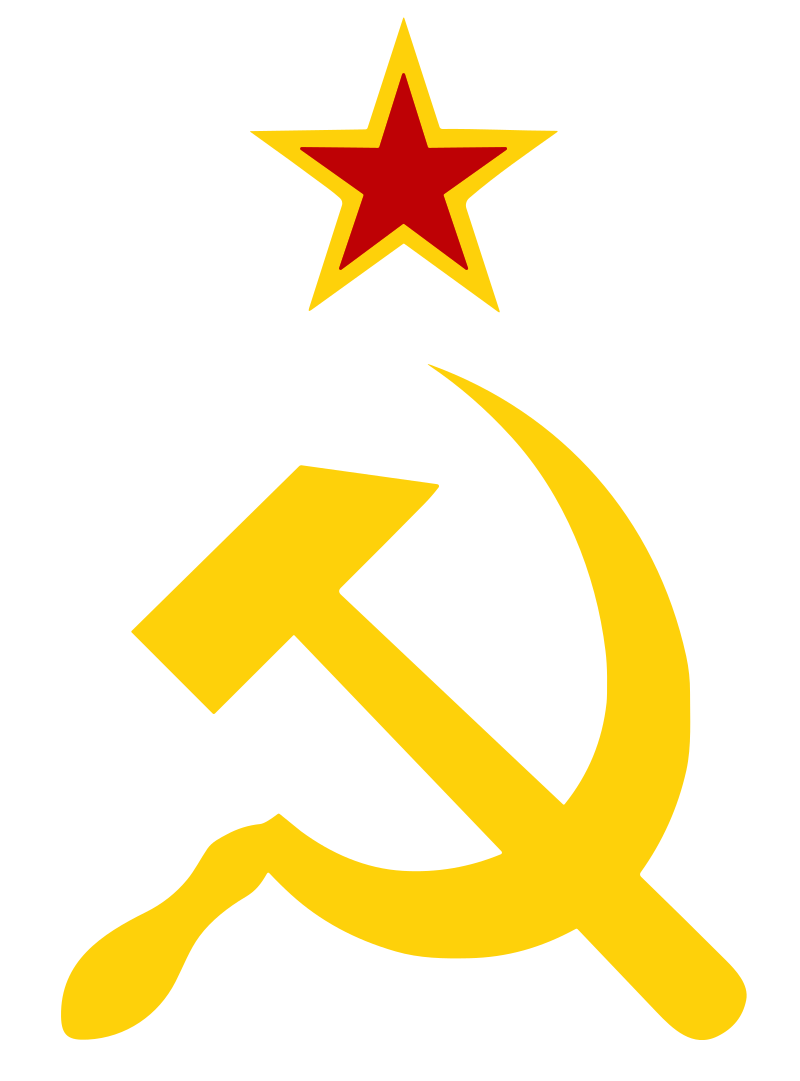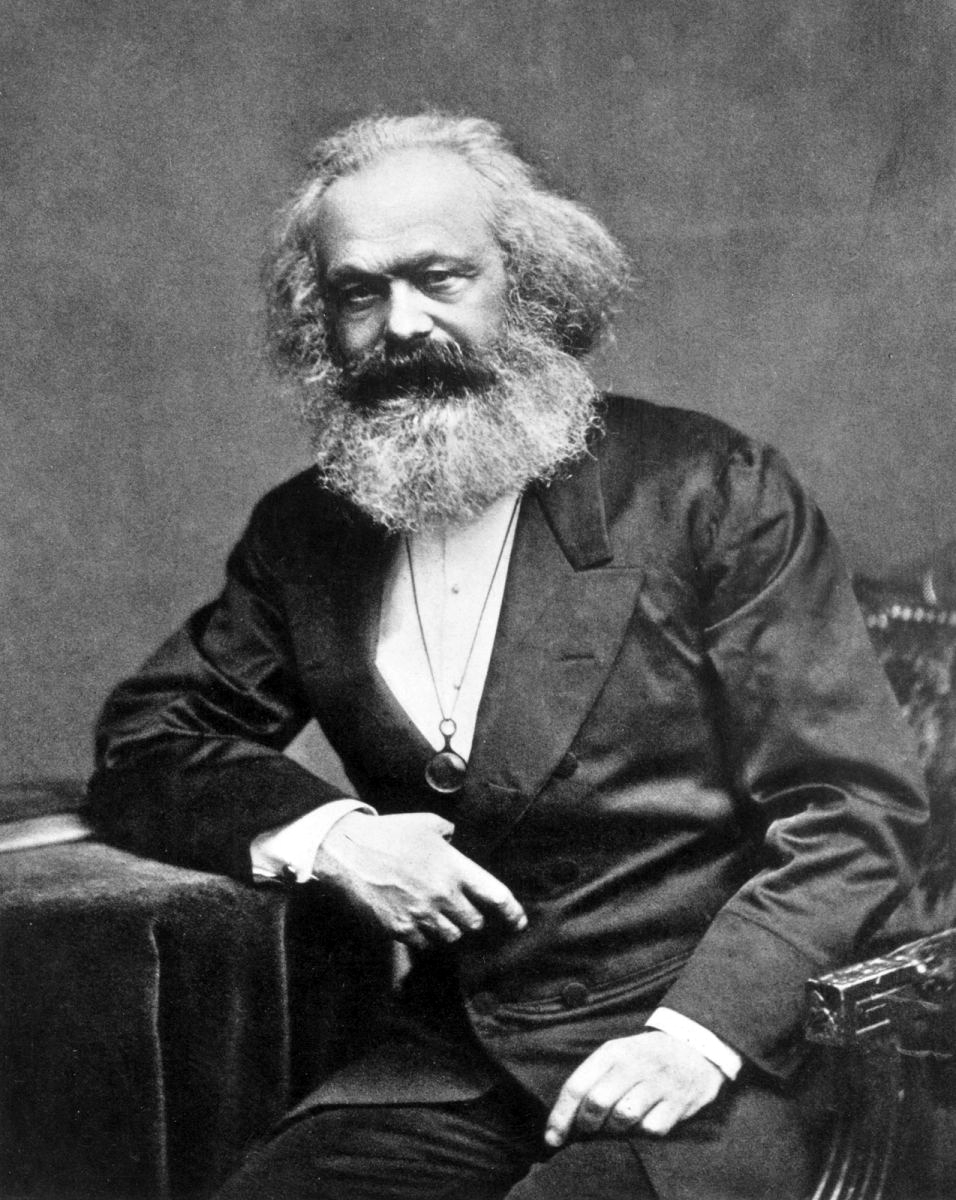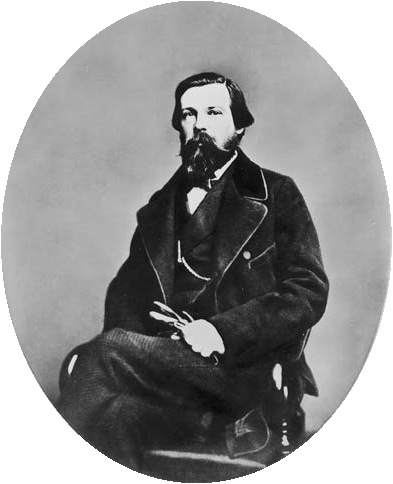More languages
More actions
جز (تغییر اصطلاح ترجمه برای Idealism) |
TheSinnerOne (بحث | مشارکتها) بدون خلاصۀ ویرایش |
||
| خط ۴: | خط ۴: | ||
[[پساکمیابی|فراوانی]] مادی ناشی از چنین جامعه ای و روابط اجتماعی برقرار در آن را میتوان در این شعار خلاصه کرد: "از هرکس به اندازه تواناییاش، به هرکس به اندازه نیازش" شعاری که توسط کتاب [[نقد برنامه گوتا|نقد برنامه گوتا(1875)]]<ref>https://www.marxists.org/farsi/archive/marx/works/1875/naghd-gota.pdf</ref> نوشته از [[کارل مارکس]] رواج یافت. | [[پساکمیابی|فراوانی]] مادی ناشی از چنین جامعه ای و روابط اجتماعی برقرار در آن را میتوان در این شعار خلاصه کرد: "از هرکس به اندازه تواناییاش، به هرکس به اندازه نیازش" شعاری که توسط کتاب [[نقد برنامه گوتا|نقد برنامه گوتا(1875)]]<ref>https://www.marxists.org/farsi/archive/marx/works/1875/naghd-gota.pdf</ref> نوشته از [[کارل مارکس]] رواج یافت. | ||
در [[سرمایه جلد 1|اولین جلد سرمایه]]، مارکس می نویسید "انجمنی از انسان های آزاد که با ابزارهای تولید مشترک به کار میپردازند و نیروی کار فردی شان را (آگاهانه) در حکم یک نیروی کار اجتماعی صرف میکنند"<ref>https://www.marxists.org/farsi/archive/marx/works/1867/sarmayeh1.pdf</ref>[[File:Hammer and Sickle and Star.svg.png|thumb| | در [[سرمایه جلد 1|اولین جلد سرمایه]]، مارکس می نویسید "انجمنی از انسان های آزاد که با ابزارهای تولید مشترک به کار میپردازند و نیروی کار فردی شان را (آگاهانه) در حکم یک نیروی کار اجتماعی صرف میکنند"<ref>https://www.marxists.org/farsi/archive/marx/works/1867/sarmayeh1.pdf</ref>[[File:Hammer and Sickle and Star.svg.png|thumb|داس و چکش نماد جهانی کمونیسم است و نشان دهنده ی همبستگی بین طبقه ی کارپیشگان و دهقانان می باشد.]] | ||
== ریشهشناسی == | == ریشهشناسی == | ||
قبل از مارکس این اصطلاح توسط بسیاری از اعضای [[سوسیالیست تخیلی|سوسیالیست ایدهعالگرا]] استفاده می شد که جامعه ای [[ایدئالیسم|آرمان گرا]] و برابری طلب را توصیف کند. | قبل از مارکس این اصطلاح توسط بسیاری از اعضای [[سوسیالیست تخیلی|سوسیالیست ایدهعالگرا]] استفاده می شد که جامعه ای [[ایدئالیسم|آرمان گرا]] و برابری طلب را توصیف کند. | ||
استفاده ی امروزه از این اصطلاح به مارکس باز میگردد هنگامی که او مفهوم [[سوسیالیسم علمی]] را به همراه [[فردریک انگلز]]<nowiki/>پایه گذاری کرد. تئوری سوسیالیسم علمی، کمونیسم را جامعه ای آرمان گرا و کامل توصیف نمی کند بلکه آن را مرحله ی توسعه ای توصیف می کند که پس از فرایندی طولانی از [[مبارزه طبقاتی]] به دست می آید. لیکن مارکس "[[سوسیالیم]]" و "کمونیسم" را به یک معنا و به جای هم دیگر استفاده میکرد و تفاوتی بین این دو اصطلاح نمیگذاشت. | |||
[[لنین]] اولین فردی بود که تفاوت مشخصی بین دو اصطلاح سوسیالیسم و کمونیسم تعریف کرد. مفهوم کمونیسم یا سوسیالیسم مارکس بنابراین فقط کمونیسم نامیده میشود و "فاز انتقالی" مارکس، سوسیالیسم نامیده میشود. | |||
== Characteristics of Communism == | == Characteristics of Communism == | ||
نسخهٔ ۱۵ آوریل ۲۰۲۴، ساعت ۰۰:۱۷
 | این مقاله مشکلات ترجمه دارد. می توانید با ویرایش آن کمک کنید |
کمونیسم تئوری[لاتین ۱] از نحوه ی تولید است که با مالکیت مشترک بر ابزار تولید به همراه نبود طبقات اجتماعی تعریف میشود. این اصطلاح همچنین برای گروه هایی استفاده میشود که هدف نهایی ایشان دستیابی به این نحوه ی تولید است.
فراوانی مادی ناشی از چنین جامعه ای و روابط اجتماعی برقرار در آن را میتوان در این شعار خلاصه کرد: "از هرکس به اندازه تواناییاش، به هرکس به اندازه نیازش" شعاری که توسط کتاب نقد برنامه گوتا(1875)[۱] نوشته از کارل مارکس رواج یافت.
در اولین جلد سرمایه، مارکس می نویسید "انجمنی از انسان های آزاد که با ابزارهای تولید مشترک به کار میپردازند و نیروی کار فردی شان را (آگاهانه) در حکم یک نیروی کار اجتماعی صرف میکنند"[۲]

ریشهشناسی
قبل از مارکس این اصطلاح توسط بسیاری از اعضای سوسیالیست ایدهعالگرا استفاده می شد که جامعه ای آرمان گرا و برابری طلب را توصیف کند.
استفاده ی امروزه از این اصطلاح به مارکس باز میگردد هنگامی که او مفهوم سوسیالیسم علمی را به همراه فردریک انگلزپایه گذاری کرد. تئوری سوسیالیسم علمی، کمونیسم را جامعه ای آرمان گرا و کامل توصیف نمی کند بلکه آن را مرحله ی توسعه ای توصیف می کند که پس از فرایندی طولانی از مبارزه طبقاتی به دست می آید. لیکن مارکس "سوسیالیم" و "کمونیسم" را به یک معنا و به جای هم دیگر استفاده میکرد و تفاوتی بین این دو اصطلاح نمیگذاشت.
لنین اولین فردی بود که تفاوت مشخصی بین دو اصطلاح سوسیالیسم و کمونیسم تعریف کرد. مفهوم کمونیسم یا سوسیالیسم مارکس بنابراین فقط کمونیسم نامیده میشود و "فاز انتقالی" مارکس، سوسیالیسم نامیده میشود.
Characteristics of Communism


Karl Marx and Friedrich Engels
In their seminal and most well-known work, Marx and Engels laid the basic principles of communism in which all future revolutionaries build their principles upon. For one, they acknowledged and made clear that communism, as an ideology had always existed since the rise of the bourgeoisie and the proletariat. They wrote in the famous opening:
A spectre is haunting Europe—the spectre of Communism[۳]
To begin with, what we recognise as communism stems from the existence of class struggle[۴]. Marx and Engels, through historical and dialectical materialism, write that throughout history, there has always been a class struggle within known society between what we know as the ruling class and the ruled class. In the manifesto, they have given the following examples:
- Freeman and slave
- Patrician and plebeian
- Lord and serf
- Guild-master and journeymen
- Oppressor and oppressed
Even though all communists hold the bourgeoisie to be antagonistic towards the proletariat, and thus considered to be an adversary, Marx and Engels made it clear that the rise of the Bourgeoisie stemmed from their own revolutionary tendencies in overthrowing the feudal classes[۵] which in turn, led to the creation of the current contradictions between themselves and the proletariat, or what we know as, the working class.
Communists do not claim to be the first and only parties that advocate and fight for the working class. What Marx and Engels specified in regards to communists are that they recognise the struggles of the working class regardless of nationality[۶]. Marx and Engels then proceeded to emphasise was the need of a revolutionary party that would safeguard and fight for the Proletariat. Marx and Engels were resolute that the Communists are the most advanced parties for the proletariat due to their ultimate goals of:
- Forming the proletariat into a revolutionary class
- Overthrowing the supremacy of the bourgeoisie
- Allowing the proletariat into conquest of political power
A common misconception that right-wingers and even some sections of the left have in regard to another aim of communism is the abolition of property. Marx and Engels have already made exceedingly clear in the manifesto that while Communists openly intend to do away with property, they are only interested in doing away with private property which belonged exclusively to the bourgeoisie[۷].
Place in historical materialism
In Marx's theory of historical materialism, communism represents the final mode of production. Each mode of production is defined by its relations of production: the class dynamics, the methods of exploitation, the systems of exchange, the level of development of the means of production, etc. Capitalism is defined by the relationship between the bourgeoisie and the proletariat, commonly referred to as a "dictatorship of the bourgeoisie". Socialism is defined by the same relations, but instead it exhibits a "dictatorship of the proletariat". Socialism still has class dynamics and exploitation, but the proletariat is the class on top.[۸]
In the Communist Manifesto, Marx and Engels described the evolution of society through the material changes as epochs of history. The relationships between opposing ranks such as patricians, knights, plebeians, slaves, merchants, feudal lords and vassals serve as forces of class antagonism. The current stage or epoch after the demise of feudalism at the hands of capitalism only created new classes and forms of oppression, this time between the bourgeoisie and the proletariat.
Communism has no classes, and therefore no class dynamics. It has no exploitation, and therefore no methods of exploitation. While communism is never meant to be the "end of history", it is certainly the final mode of production as all contradictions of modes of productions have been wiped out.[۹]
Material conditions
A communist economy relies on widespread electrification and automation and the mechanization all labour.[۱۰]
Implementation
The implementation of communism became an extremely debated issue after the success of various communist movements. Almost all communist political theory concerns dialectical and historical materialism, socialist transformation and socialist development.
Engels provided some theory about the transition from socialism to communism (now known as the withering away of the state) in Anti-Dühring: الگو:Quote Stalin discusses the topic in his work, Economic problems of socialism in the USSR: الگو:Quote
Communism as an ideology
Communism is sometimes described as a political theory: Marxists have Marxism, Darwinists have Darwinism, and Communists have Communism. This term is usually used by liberals, although some communists have used the term communism this way. To have a better understanding of it, Engels stated that:
Communism is the doctrine of the conditions of the liberation of the proletariat.
Communism as a movement
According to Marx, communism can be defined as the "the real movement which abolishes the present state of things." The communist movement differs from other workers' movements due to its internationalism and because it represents the entire working class.[۱۱]
Communism has also been defined as a movement for the re-humanization and liberation of the exploited and oppressed masses that restores equal rights to all genders and nationalities.[۱۲]
See also
References
- ↑ https://www.marxists.org/farsi/archive/marx/works/1875/naghd-gota.pdf
- ↑ https://www.marxists.org/farsi/archive/marx/works/1867/sarmayeh1.pdf
- ↑ “A spectre is haunting Europe—the spectre of Communism”
Karl Marx & Friedrich Engels (1848). Manifesto of the Communist Party. - ↑ “The history of all hitherto existing society is the history of class struggles”
Karl Marx & Friedrich Engels (1848). Manifesto of the Communist Party: 'Bourgeois and Proletarians'. - ↑ “The bourgeoisie, historically, has played a most revolutionary part.”
Karl Marx & Friedrich Engels (1848). Manifesto of the Communist Party: 'Bourgeois and Proletarians'. - ↑ “The Communists are distinguished from the other working-class parties by this only: 1. In the national struggles of the proletarians of the different countries, they point out and bring to the front the common interests of the entire proletariat, independently of all nationality.
2. In the various stages of development which the struggle of the working class against the bourgeoisie has to pass through, they always and everywhere represent the interests of the movement as a whole.”
Karl Marx & Friedrich Engels (1848). Manifesto of the Communist Party: 'Proletarians and Communists'. - ↑ “We Communists have been reproached with the desire of abolishing the right of personally acquiring property as the fruit of a man’s own labour, which property is alleged to be the groundwork of all personal freedom, activity and independence.
Hard-won, self-acquired, self-earned property! Do you mean the property of petty artisan and of the small peasant, a form of property that preceded the bourgeois form? There is no need to abolish that; the development of industry has to a great extent already destroyed it, and is still destroying it daily.
Or do you mean the modern bourgeois private property?
But does wage-labour create any property for the labourer? Not a bit. It creates capital, i.e., that kind of property which exploits wage-labour, and which cannot increase except upon condition of begetting a new supply of wage-labour for fresh exploitation. Property, in its present form, is based on the antagonism of capital and wage labour. Let us examine both sides of this antagonism.
To be a capitalist, is to have not only a purely personal, but a social status in production. Capital is a collective product, and only by the united action of many members, nay, in the last resort, only by the united action of all members of society, can it be set in motion.
Capital is therefore not only personal; it is a social power.
When, therefore, capital is converted into common property, into the property of all members of society, personal property is not thereby transformed into social property. It is only the social character of the property that is changed. It loses its class character”
Karl Marx & Friedrich Engels (1848). Manifesto of the Communist Party: 'Proletarians and Communists'. - ↑ Mao Zedong (July 1964) On Khrushchov's Phoney Communism and Its Historical Lessons for the World
- ↑ خطای یادکرد: برچسب
<ref>نامعتبر؛ متنی برای ارجاعهای با نام:0وارد نشدهاست - ↑ Economics Institute of the Academy of Sciences of the U.S.S.R (1954). Political Economy: 'The Gradual Transition from Socialism to Communism'. [PDF] London: Lawrence & Wishart. [MIA]
- ↑ Karl Marx, Friedrich Engels (1848). Communist Manifesto: 'Proletarians and Communists'. [MIA]
- ↑ Stephen Gowans (2018). Patriots, Traitors and Empires: The Story of Korea’s Struggle for Freedom: 'The US Occupation' (p. 77). [PDF] Montreal: Baraka Books. ISBN 9781771861427 [LG]
Notes
خطای یادکرد: برچسب <ref> برای گروهی به نام «لاتین» وجود دارد، اما برچسب متناظر با <references group="لاتین"/> یافت نشد.
